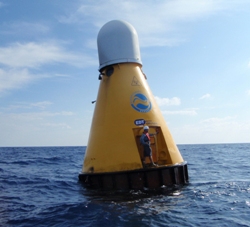Mar 25 2010
Information technology and communications provider Harris Corporation is offering its engineering services, communications technology and support service for an offshore sensor system in order to assist detecting and providing early tsunami warnings in the region of eastern Mediterranean Sea.
 A Harris technician Preparing for Routine Maintenance on the OceanNet™ Buoy Located in the Mediterranean Sea
A Harris technician Preparing for Routine Maintenance on the OceanNet™ Buoy Located in the Mediterranean Sea
Harris Corporation primarily supports CSnet International, Inc., whose affiliate CSnet (CYPRUS) Ltd. has partnered with the Oceanography Centre of Cyprus for producing and installing a Tsunami Warning and Early Response system for Cyprus (TWERC) prototype.
The system comprises numerous sensitive pressures sensors and seismometers set up on different locations of the seafloor and hooked up to a Harris OceanNet buoy fastened around 80 kilometers away from Cyrus’ southern coast. One of the key components of the Offshore Communications Backbone (OCB) project is the buoy, which is jointly developed by CSnet and Harris Corporation. The OCB is an expandable, modular seafloor system ideal for deep-ocean, long-term observation.
Andrew Clark, CEO and President at CSnet mentioned that the system will help protect the visitors and inhabitants of Cyprus and also the people living in the eastern coast of the Mediterranean, which is seismically active.
Harris Maritime Communications Services’ President, Rick Simonian commented that since the year 2004, the company has been successfully designing and operating an OceanNet buoy in the region of the eastern Mediterranean for providing oceanographic information.
The warning system incorporates tested detection techniques, in addition to novel approaches under assessment by CSnet for developing a cost-effective, but still reliable tsunami warning system.
Project leader of TWERC and Director at the Oceanography Centre of Cyprus, Georgious Georgiou feels that detecting a tsunami wave is one part, but the more critical part is communicating those warning information to the concerned and aware population.